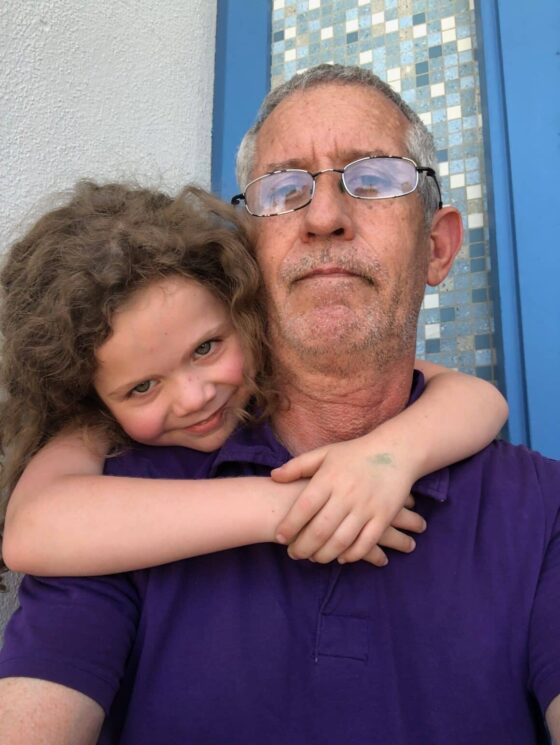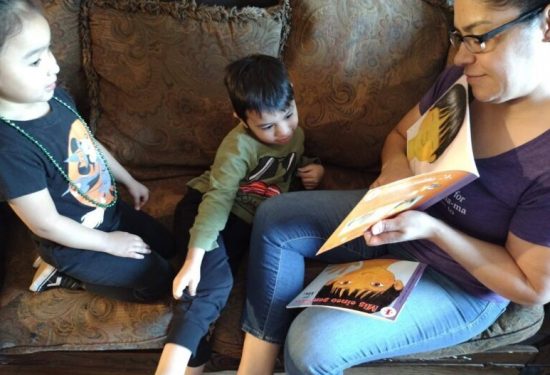Stephen Cutty, like many home-based child care providers, started his business, Carleigh’s Place Child Care, in part so that he could care for his own child at home while also earning an income. Prior to 2018, he’d been working as a union organizer and dating a woman who, he later learned, was struggling with substance abuse disorder. When his daughter, Carleigh, was born, he intervened to ensure that she got the care she needed in pediatric intensive care. Then he embraced his role as a single dad, who prioritized his daughter’s care over everything else.
“I lost some job opportunities,” he says, “because I had a newborn and I couldn’t find full-time child care. Mom was out of the picture. I was determined to make sure my daughter had the best possible opportunities in her life, and the path I saw toward that goal was to go into child care.”
He knew about the licensing process because he’d represented some Head Start programs in the area, so Stephen decided to rent a home in Bakersfield, California, and jump into the process of getting licensed. “It was a lot of hard work,” he says. “I had to take a lot of classes; get trained in CPR, mandatory reporting, first aid; and do all the background checks. I had to get the landlord’s permission to do child care out of a rental property. It took about 4 months to get all the paperwork done. I thought that as soon as I opened my doors, I would have clients because there’s always a child care shortage, but that wasn’t the case.”
Initially, the California referral agency listed Stephen’s business under his first and last name, which he says, discouraged clients from calling him. “Moms see a male name on the list, and most will move right on to the next name.” After a year, Stephen requested that his first name not be listed, and then he started getting calls. His first client was a single mom who worked second shift for the postal service and needed care for her three children during hours when child care centers in town were closed. “She really opened the door for my business,” Stephen says. He cared for her children alongside his own daughter for five years, and soon his reputation as a caregiver grew and got around to other families.
I participate in California’s Bridge Program for foster children, and it’s a blessing to see those kids have a safe and healthy environment to come to while their foster parent is going to work and then, sometimes to see them reunited with their birth families. So for families like these who are in transition, being able to provide a stable, loving environment—“a place where ‘yes,’ ‘no,’ ‘please,’ and ‘thank you’ are the foundation of respectful relationships—is an opportunity to help all of them grow into successful, productive people.
In those first years, Stephen encountered other obstacles related to being a single man in a profession populated almost entirely by women. More than 95 percent of the early education workforce identifies as female, according to the 2024 Bureau of Labor Statistics employment survey.* The first skepticism he encountered actually came from a state program inspector who told him outright, “You are never going to make it because you’re a male.” Stephen requested to work with a different inspector after that.
Research shows that while men in child care face greater suspicion, there’s no evidence to suggest that men are more likely than women to abuse children. Stephen has since expanded into a large family child care home and hired five assistants, which allows him to allay parents’ fear by making sure there are always at least two caregivers working at a time.
He now staffs a 24-hour, 7-days-a-week schedule that allows the team to care for 38 children, ages newborn to 10 years old. Stephen’s license allows him and his staff to care for up to 14 children at one time, or fewer if more infants are present. Maintaining the ratio of staff to children when families have different schedules—some part time, some full time, some traditional hours, many non-traditional hours—requires some juggling and a lot of oversight, he says. “I have a really wonderful staff who I trust completely, but I’m still here about 18 hours a day and I still change diapers, teach manners, set boundaries, help kids regulate their emotions and be kind to each other, just like they do.”
Stephen notes that the small size of home-based child care allows for a lot of one-on-one time between kids and adults, which really helps children build their socialization skills. “Some of the kids here have single dads or single moms. Some of my families are living in homeless shelters and trying to make a living. Some are working on staying sober. I participate in California’s Bridge Program for foster children, and it’s a blessing to see those kids have a safe and healthy environment to come to while their foster parent is going to work and then, sometimes to see them reunited with their birth families. So for families like these who are in transition, being able to provide a stable, loving environment—“a place where ‘yes,’ ‘no,’ ‘please,’ and ‘thank you’ are the foundation of respectful relationships—is an opportunity to help all of them grow into successful, productive people.”
He’s also proud of the impact his small business has on the community. While his income is just able to keep the business afloat, most of his earnings go back into his program and facility. “I pay my employees $19 an hour and they stay with me. I’m giving back, helping working families and my employees pay their rent, buy groceries, stay off of welfare as much as possible. That’s an impact that’s felt more than it’s seen, but I know it’s there.”
What advice does he have for other men considering a future in the child care workforce? “You have to have a certain temperament for this type of work. Being cool, calm, and collected is your greatest strength when you’re dealing with small children who can sometimes outrun, outmaneuver, and outsmart you,” he says with a chuckle. “But seriously, running a child care business has been the greatest experience of my life, watching my daughter and other kids grow into happy human beings. That makes me happy.”
*Although the current research and data only references two genders, we recognize that there are child care providers who self-identify as various genders on the gender spectrum.




